Next is the Bruel & Kjaer 2305 Level recorder
Bruel & Kjaer were and still are probably the most renowned company for low frequency and audio measuring equipment (precision microphones, vibration transducers, vibration amps audio voltmeters etc.). They are still located in Denmark.
The 2305 is basically just a chart recorder. I got it at a radio/TV station auction (with a truckload of other stuff). It dates back from the late 50's and early 60's. It's all tube based except for the power supply rectification which uses diodes. The whole thing is very very very heavy and not exactly practical if you don't have a lot (and I do mean a lot of space). But it still shows what could be accomplished with nothing but tubes as the active components.
Shot of the whole thing.
A nice option is the amplifier response switch which allows true RMS, peak, average and DC coupled operation.
The writing speed switch determines the max speed that the pen can move at (selectable from 4 to 2000 millimeters per second)
The paper speed can also be set by means of a knob that connects to a gearbox inside. Adjustable from 300 nanometers to 100 milimeters per second. (300 nm/s is about 2.6 cm/day)
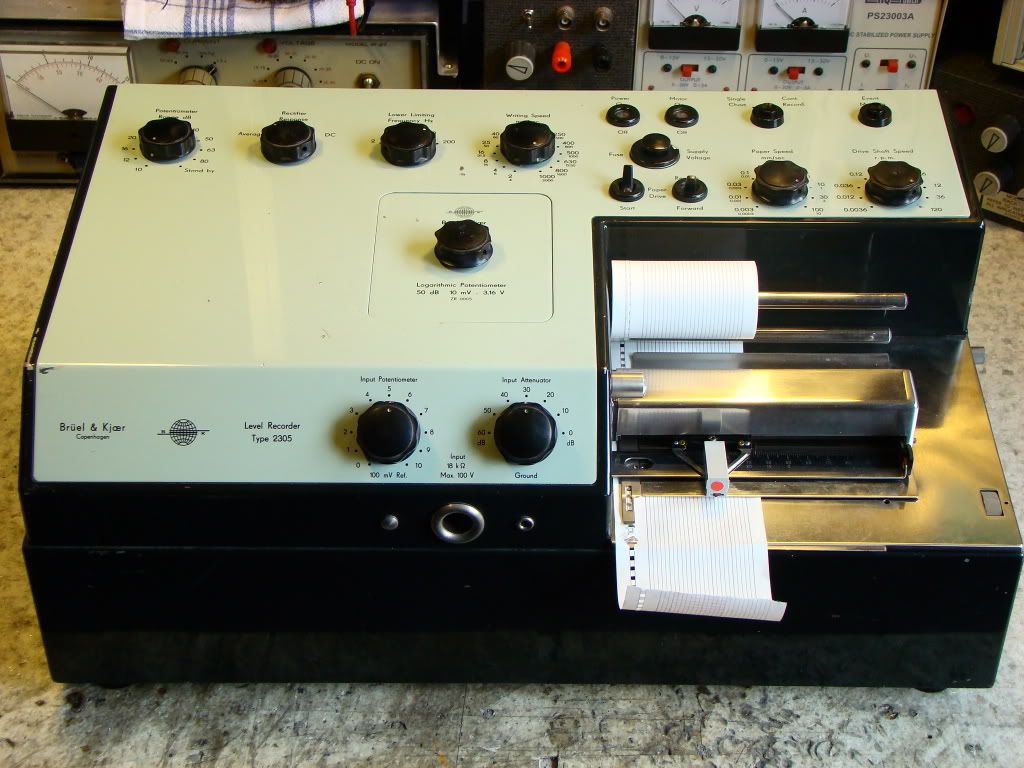
Closeup of the pen mechanism. The pen travel can be halved by simply moving the shaft to one of the two holes above the pen.
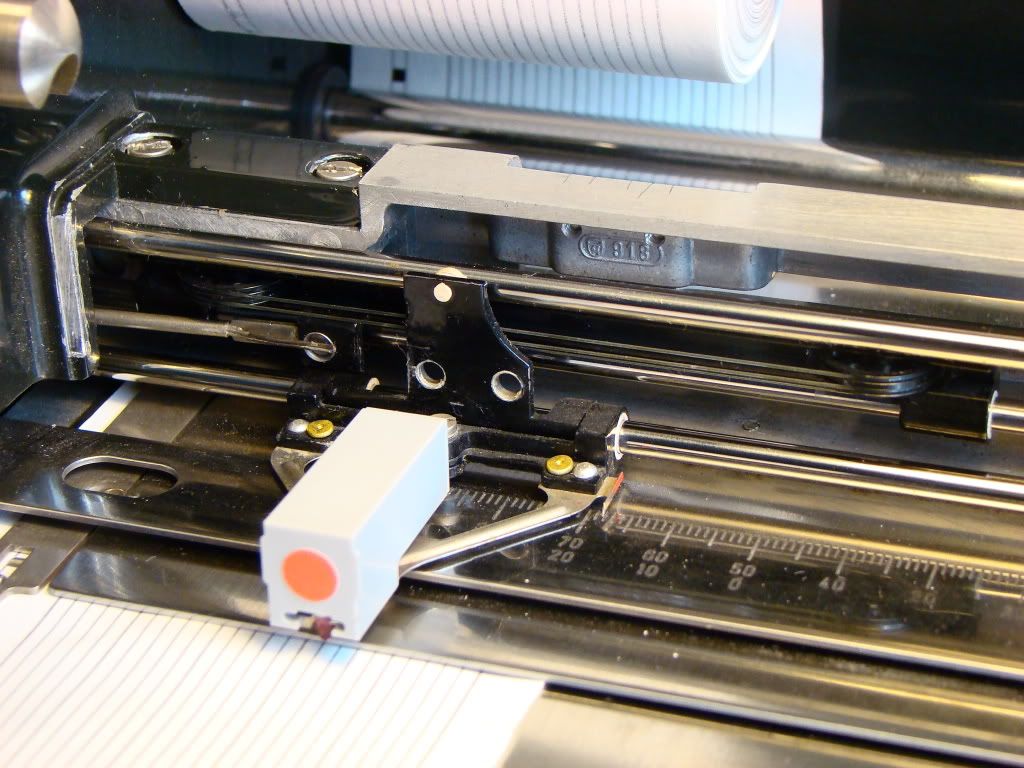
In the back the 10 tubes and the hughe power transformer (with many many taps and different windings).
I've also added a modern IEC power connector since it had the old style American 3 prong one.
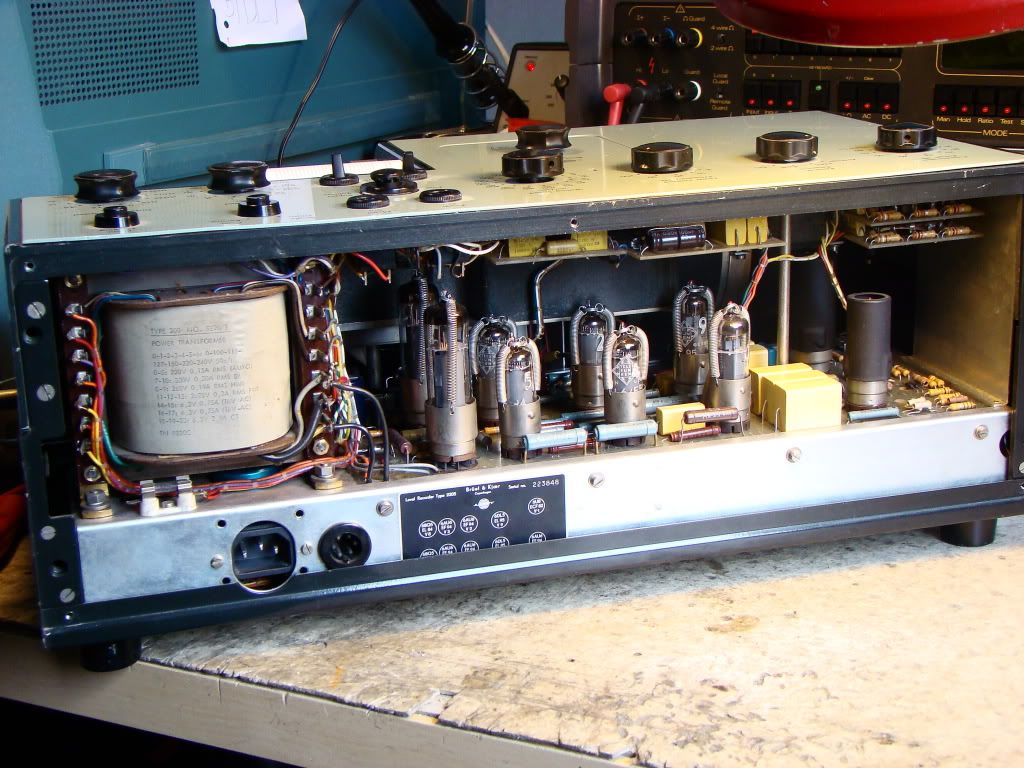
The potentiometer is used as position sensing of the pen. This one is logarithmic. It can be replaced with a linear one that then gives the pen movement a linear response.
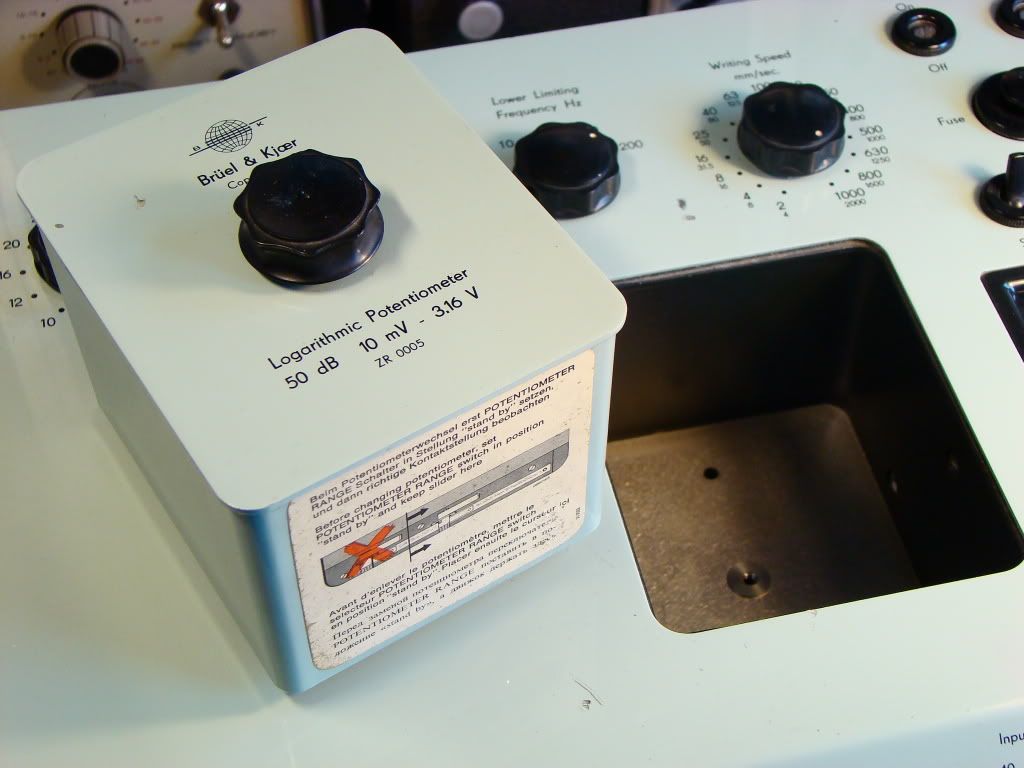
On the other side of the potentiometer the contacts can be seen. At first glance it looks like a wirewound resistor

Once opened up you can really see what's inside. Whoever designed this was probably a bit crazy.

Each junctions at two resistors are connected to a row of very fine sheets of metal The wiper then moves across these.
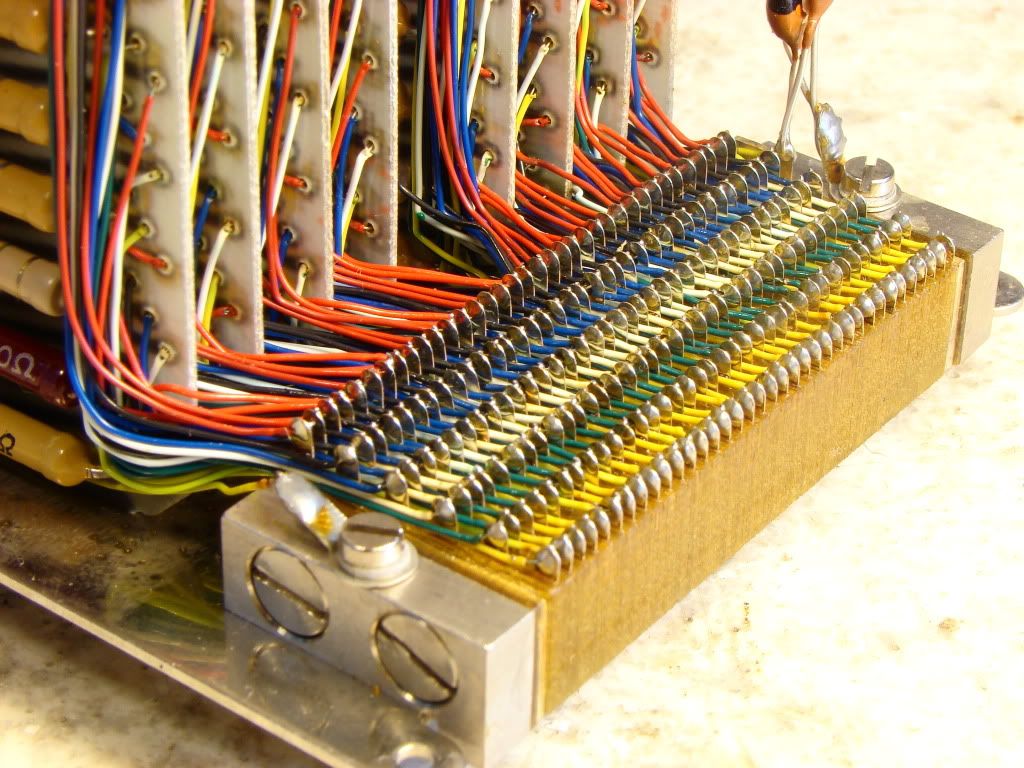
The giant linear actuator. Inside there is a former with two coils. One is the power coil used for moving the shaft back anf forth and the other is the feedback coil used for frequency and transient compensation. They are both surrounded by very powerful magnets. Similar to a speaker This technique is used to achieve true RMS measurments. Kind of like a standard moving coil meter. The actuator weighs about 7 kilos and makes up about a quarter of the weight of the entire recorder.
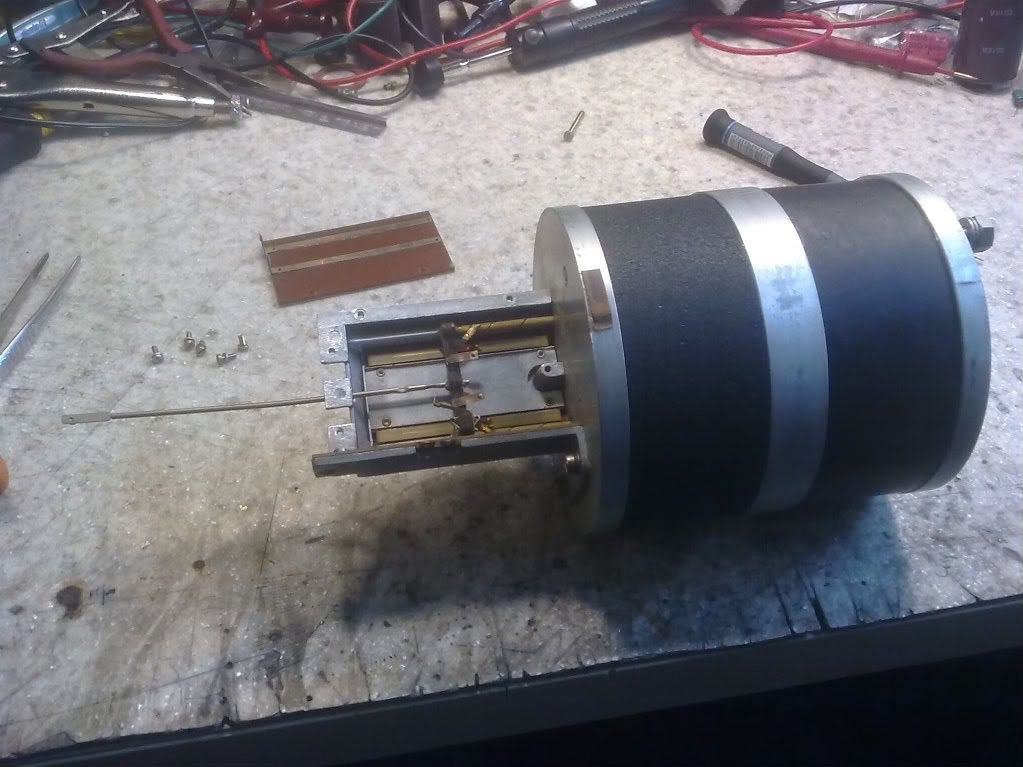
Actuator mounted back in after cleaning. The square silver can is the mechanical chopper running at 100Hz. This is part of the low offset amplifier.
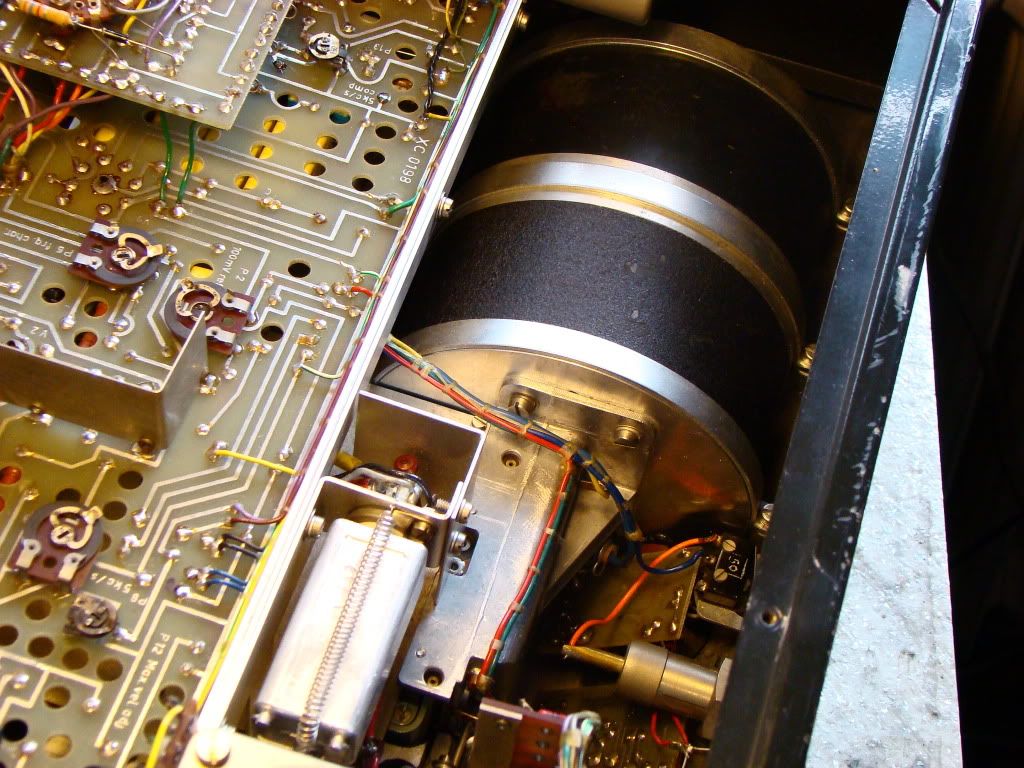
Another shot of the chopper. The motor in the background is for the paper feed.
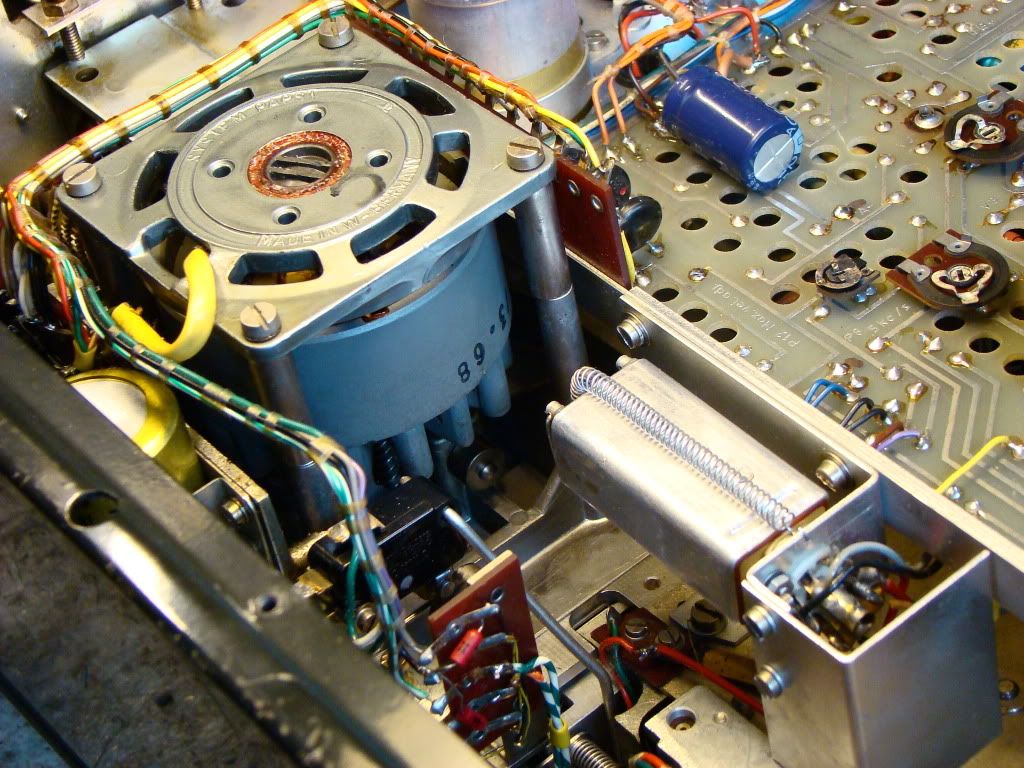
Gearbox for reducing the motor's revolutions. The leftmost gear spins the fastest and the rightmost the slowest. There is a gear that can be moved along these gears and that drives the teeth that move the paper forward.
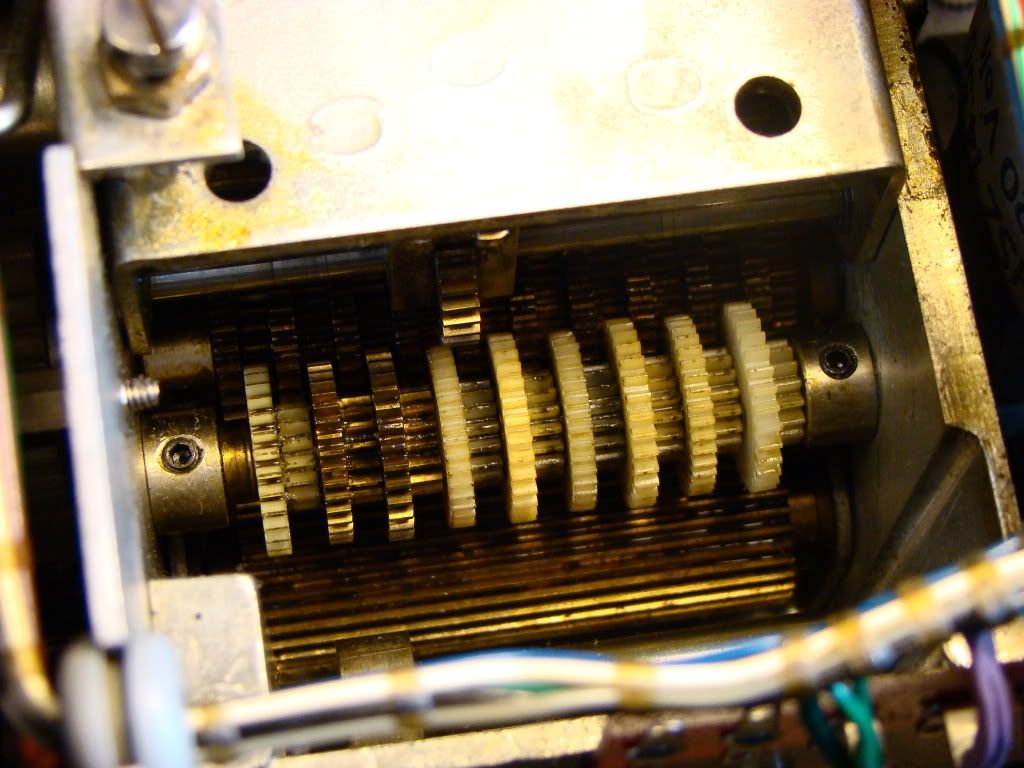
Power supply filter capacitors and filter choke. After 50 years they still read reasonably good on the LCR meter (ESR is also good). I've put some new capcitors in parallel with these to reduce the ripple.

More transformers. The one in the front is probably the input transformer. I've seen a lot of audiophiles buy JS transformers for quite a bit of money. I'm not an audiophile and I'm proud of it.
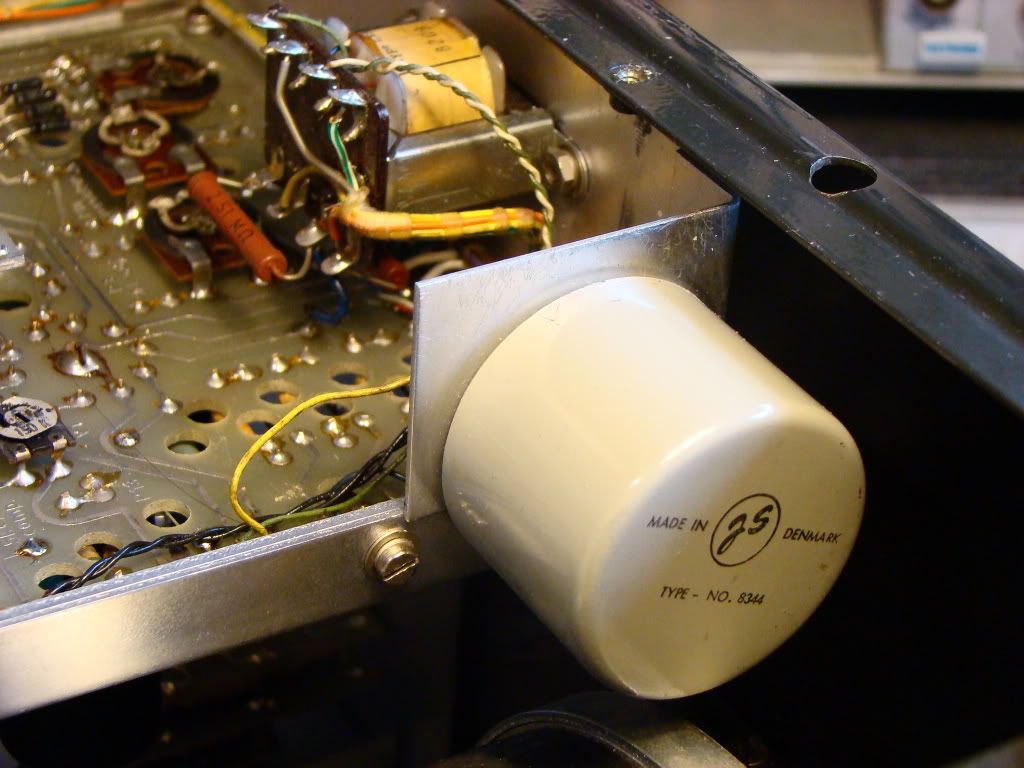
I'll have a lot of time next week so suggestions for future reviews are welcome.